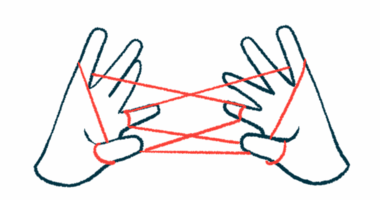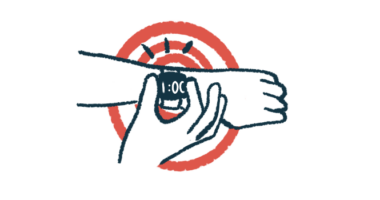Short voice recording on cellphones may help diagnose Parkinson’s
Machine learning approach distinguishes 40 patients from 41 other adults

A machine learning tool that analyzes voice recordings collected by telephone can accurately identify people with Parkinson’s disease, scientists in the U.S. report.
This noninvasive and easy to use approach could allow for an earlier disease diagnosis and start with Parkinson’s treatments, which is “essential … as with current diagnostic criteria at motor onset it is believed that approximately 50% of … [a patient’s] dopaminergic neurons have already degenerated,” the researchers wrote.
Loss of dopaminergic neurons — the nerve cells that produce dopamine, a chemical these cells need to communicate with each other — is a known cause of Parkinson’s.
The report, “A machine learning method to process voice samples for identification of Parkinson’s disease,” was published in Scientific Reports.
Changes in voice with Parkinson’s as marked by saying the vowel ‘a’
Parkinson’s can change the way a person speaks, often causing an abnormally soft or indistinct speaking voice.
In recent years, some researchers have begun exploring whether voice-based analysis could be used to help detect Parkinson’s using machine learning. Here, a large dataset is fed into a computer, and the computer uses algorithms to “learn” from the data, identifying patterns that can be used to make sense of other data.
Though some early work has been promising, most studies using machine learning-based voice analyses to identify Parkinson’s have relied on vocal recordings taken in laboratories with specific equipment. While that’s useful for a proof-of-concept scientific study, its applicability in real-world clinical practice is limited.
One proposed strategy for making this technology more widely applicable is to use phone-based recordings that patients can do at home using their own cellphones. A phone-based test to screen Parkinson’s-associated voice issues has a lot of potential applications.
“Such remote collection instruments in the future could allow easier tracking of disease progression and also response to novel therapies in clinical trials in [people with Parkinson’s],” the researchers, most with the University of Arkansas for Medical Science, wrote. “Development of a simple, cost-effective test that could be administered by a primary care physician that provides a risk assessment for potential PD [Parkinson’s disease] could also lead to earlier referral to neurologists and even movement disorders neurologists.”
Phone-based recordings, however, are usually of much lower quality than those done with specialized equipment in a laboratory. In this study, the researchers built on prior work to create a streamlined machine learning process specifically designed to analyze lower-quality recordings from cellphones.
To test the method, they evaluated voice recordings from 40 people with Parkinson’s (average age of 66.6; disease duration 9.5 years) and 41 control subjects without the disorder. People were told to say the vowel “a” out loud for about three seconds, while recording their sustained vocalization as a digital voicemail.
Patient contributions were “collected in Arkansas, a predominantly rural state, and the ability to participate from home also allowed participation from a subset of people residing in medically underserved areas that traditionally do not participate in research,” they noted.
At-home cellphone recordings distinguish between voices with ‘reliability’
After analyzing the voice recordings with the new machine learning method, the scientists calculated a statistical value called the area under the receiver operating characteristic curve or AUC. AUC measures how well a test can distinguish between two groups (i.e., people with and without Parkinson’s). AUC values can range from 0.5 to 1, with higher numbers reflecting a better ability to accurately distinguish the groups.
Results here showed AUC values of 0.96 to 0.97, suggesting a very good ability to distinguish Parkinson’s. While noting a need for further testing and refinement, findings support “the potential of the proposed approach and the feasibility of using low-quality recordings for clinical applications,” the researchers wrote.
“Our results show the reliability of telephone-collected voice samples, and the superiority” of the proposed approach against “conventional approaches for the task [of] detecting pathologic speech associated with Parkinson’s disease using phone-captured voice recordings,” the report concluded.
“Additional development and validation of this approach may potentially enable remote monitoring of [Parkinson’s patients], including in rural, medically underserved communities,” the scientists added.







